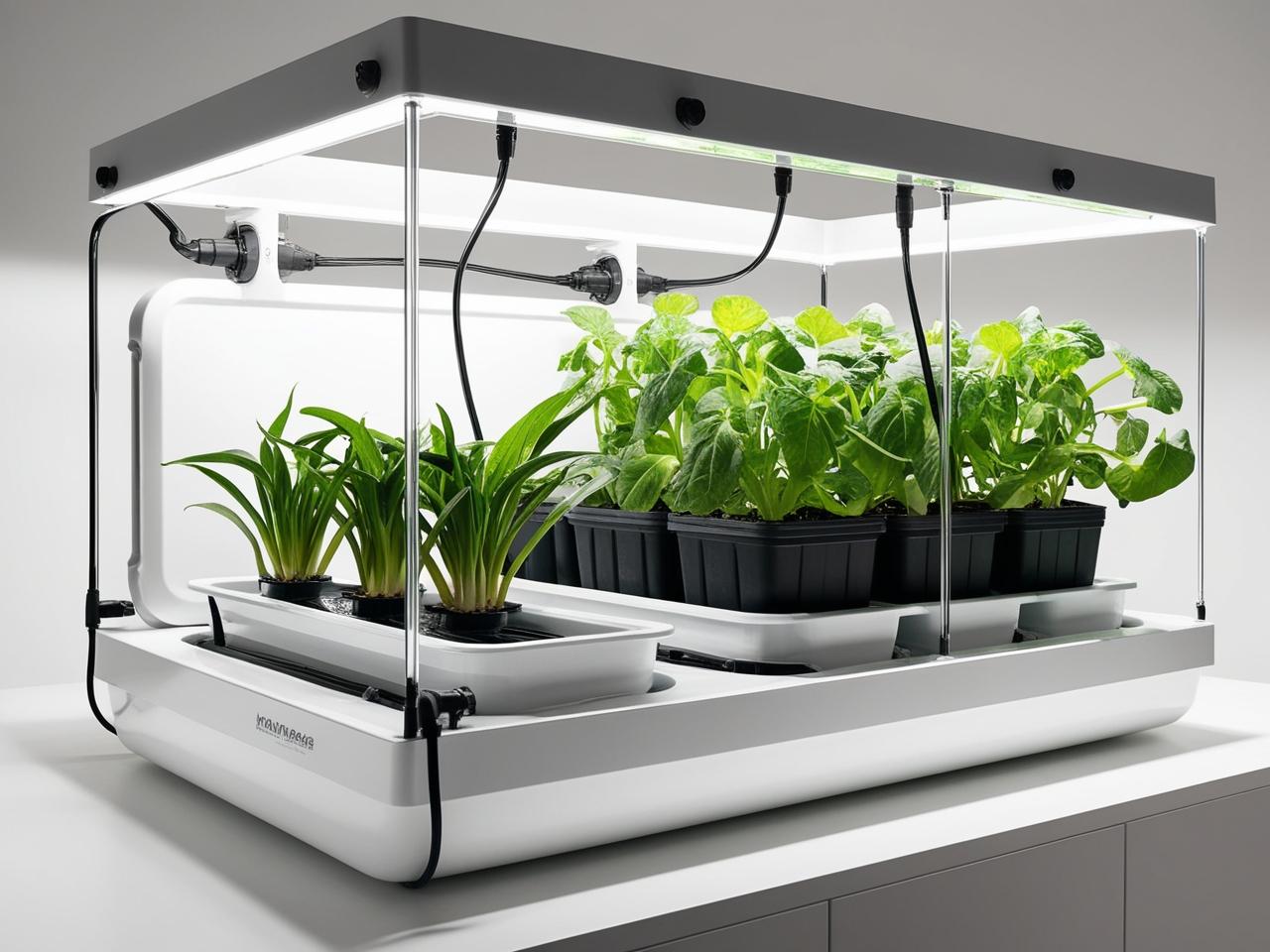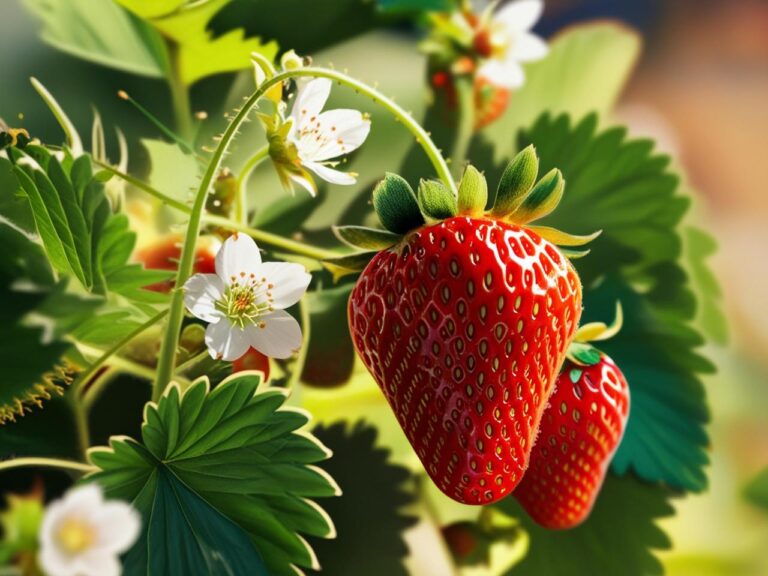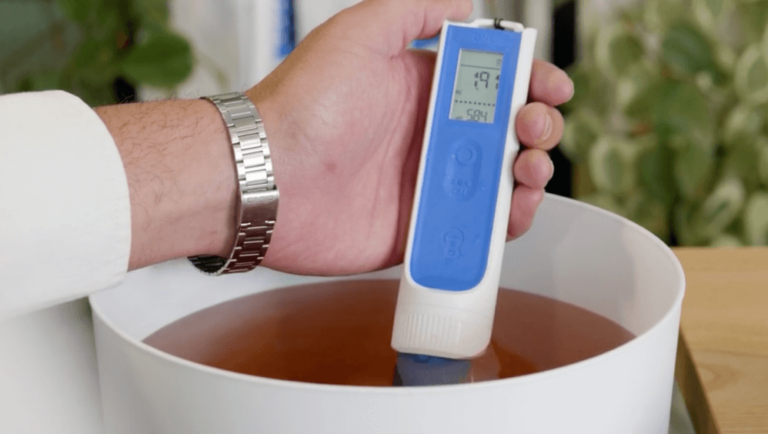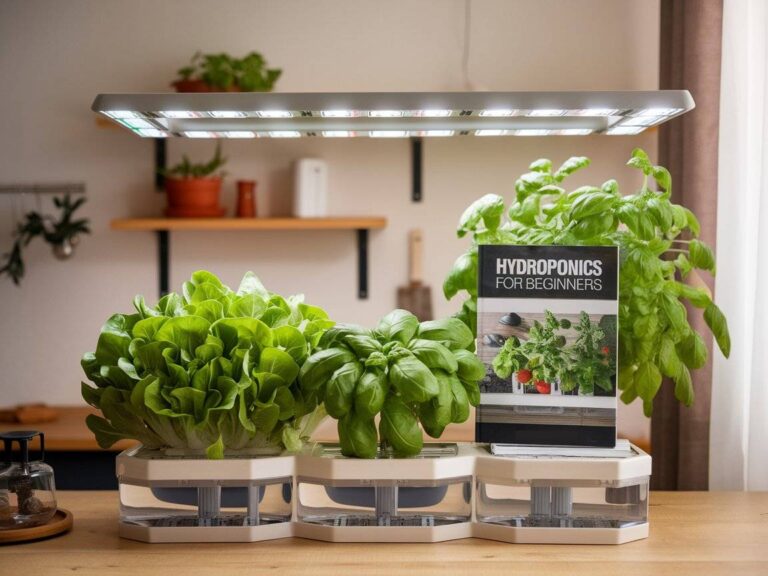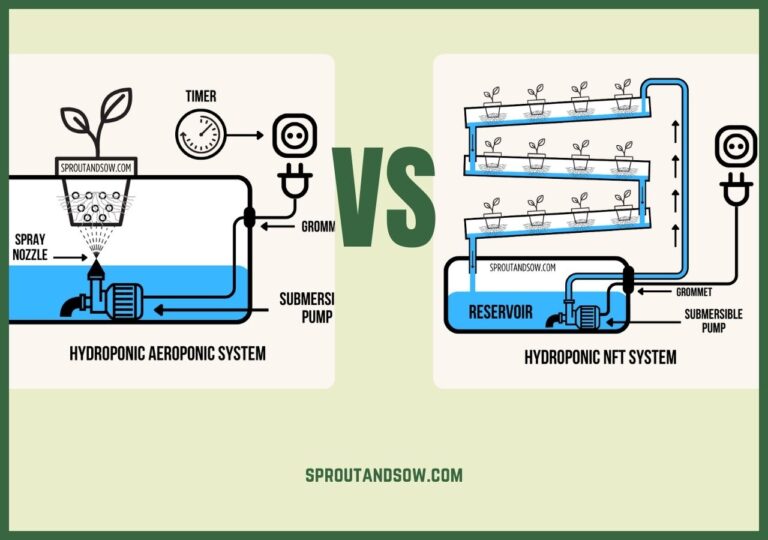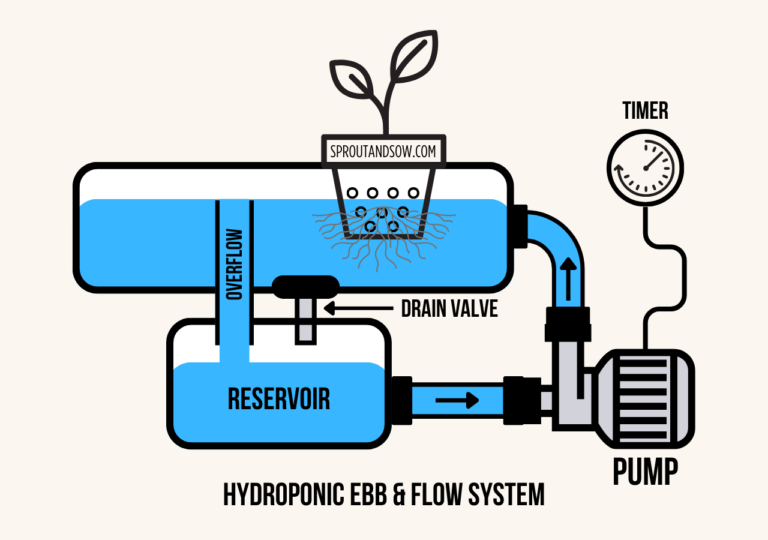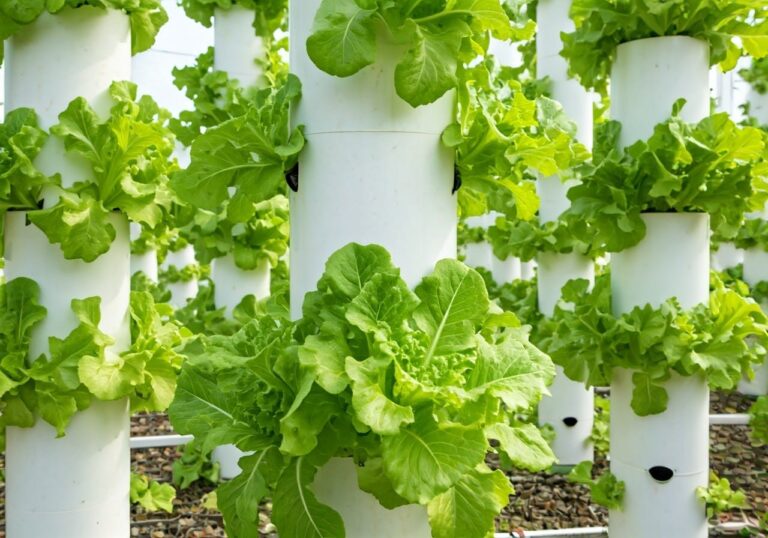Hydroponics 101 (2024)
“Imagine growing your own fresh lettuce, basil, or tomatoes, all right from your kitchen countertop, no soil, no mess, just nutrient-rich water and a bit of love. That’s hydroponics for you! This method of gardening has been gaining traction, and no wonder. It uses up to 90% less water than traditional soil gardening, and you can even see plants grow faster because they’re getting nutrients delivered directly to them, like room service for roots.
Now, if you’re anything like me, you might be thinking, ‘This sounds awesome but also complicated.’ I totally get that. I remember being overwhelmed when I first heard about hydroponics, so many choices for systems, all these nutrient solutions, lights, and, of course, the daunting pH balance. But trust me, it’s simpler than it sounds. By the end of this guide, you’ll be ready to dive into your own hydroponic setup, and I’ll walk you through all the basics, plus share a few mistakes I made so you can skip over them. Let’s get you growing!”
What is Hydroponics?
Alright, so hydroponics sounds fancy, but at its core, it’s just gardening without soil. In hydroponics, plants grow directly in water mixed with nutrients instead of soil. This means you can set up your garden indoors or even in places where traditional gardening would be tough, like a small apartment.
There are a few different hydroponic systems, but let’s start with the basics. One of the simplest is the Kratky Method. Picture this: you have a container of water with nutrients mixed in, and your plant is suspended above it. As it drinks up the water, it creates an air gap, letting the roots breathe. This method doesn’t need pumps or electricity, making it perfect for beginners. Now, I tried this with lettuce once, and let’s say my first attempt was…a lesson. I added way too much nutrient mix, thinking, “More food equals bigger plants, right?” Well, my poor lettuce looked like it had been on a week-long sugar high. Lesson learned, follow the instructions on the bottle!
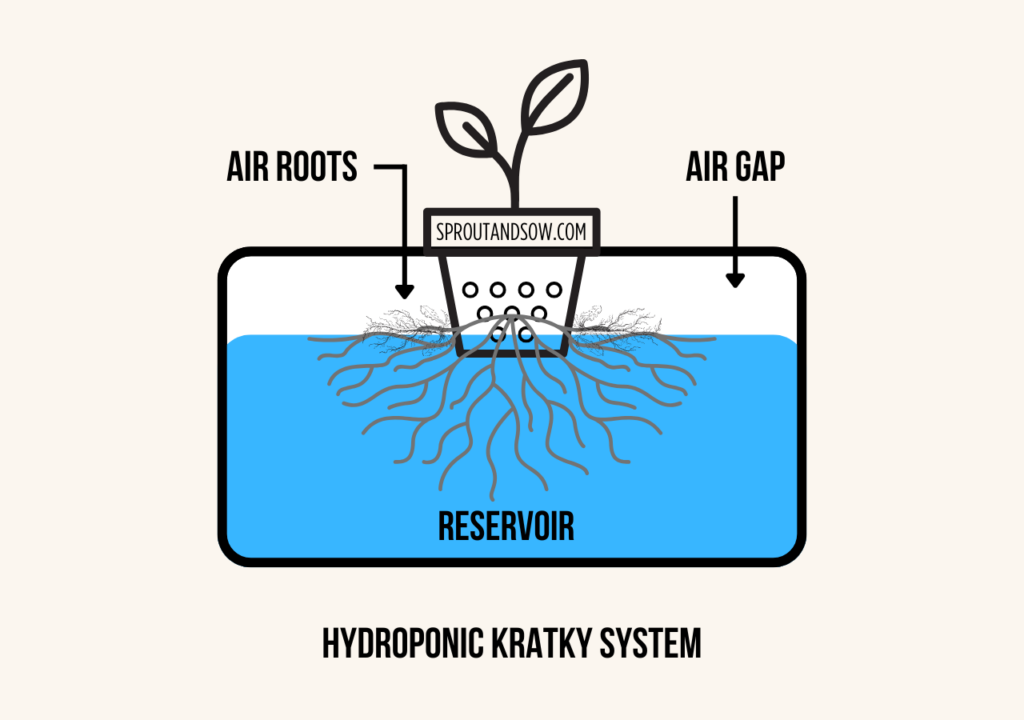
For a bit more complexity, there’s the Nutrient Film Technique (NFT). This setup has a thin layer of water (the “film”) constantly flowing over the plant roots. The trick here is that roots get both nutrients from the water and oxygen from the air. Now, you need a small pump for this, so it’s a bit more technical, but it’s still beginner-friendly. Honestly, I tried this with herbs like basil, and it was amazing how quickly they grew. Plus, it was kind of mesmerizing to watch.
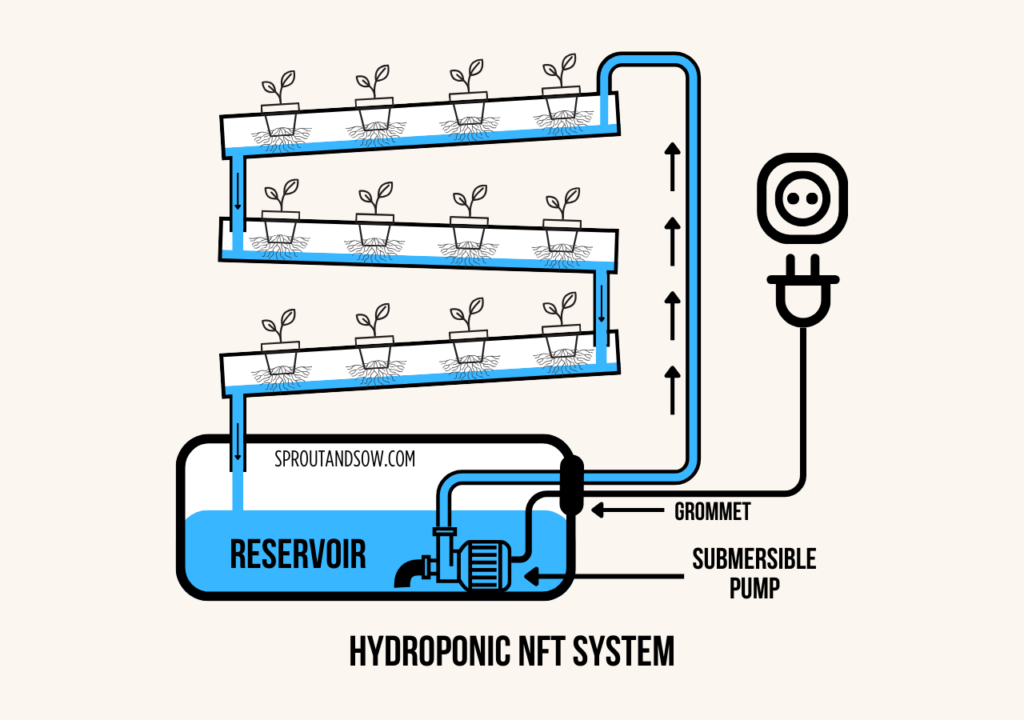
Lastly, there’s the Deep Water Culture (DWC) system. Imagine your plants floating on a raft, with roots hanging down into the water that’s being bubbled with air. This setup is a bit more of an investment since it needs an air pump to keep things oxygenated, but for plants like tomatoes, it’s a game-changer.
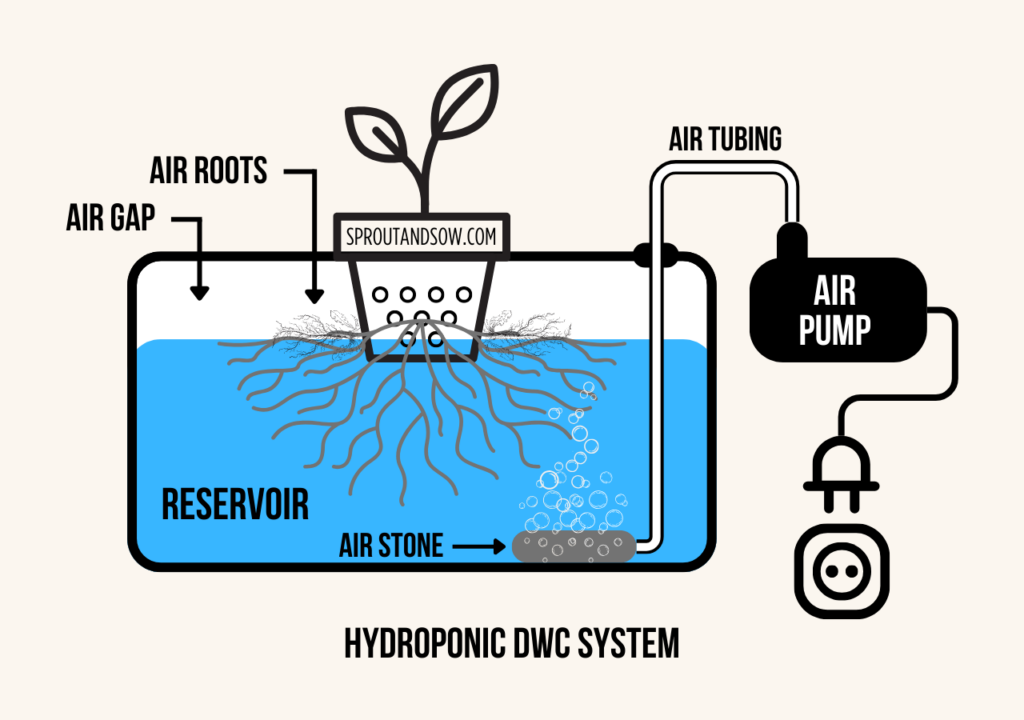
The beauty of hydroponics is that there’s a system for everyone. Whether you’re a tech wizard or just want something low-maintenance, there’s a setup that’ll work for you.
Benefits of Hydroponic Gardening
You know, one of the biggest perks of hydroponic gardening is the speed. Plants grow like they’re on fast-forward. I’m talking 30-50% faster than traditional soil gardening, which blew my mind the first time I tried it. One week, I’m putting tiny basil seedlings in my nutrient solution, and the next, I’ve got leaves big enough to make pesto. It’s seriously satisfying, especially if you’re impatient like me.
Another great benefit is the water savings. Because hydroponics recirculates water, you can save up to 90% compared to soil gardening. So, if you’re in a place where water conservation matters (or you just want to keep your water bill low), hydroponics is a great option. Plus, because you’re growing indoors, you’re way less likely to deal with pests or weeds. I used to battle aphids constantly in my outdoor garden, but with my indoor setup, I haven’t had to worry about them at all.
And then, of course, there’s the space efficiency. I live in a pretty small place, so the fact that I can grow vertically is a lifesaver. You can even stack hydroponic systems to make the most out of a small area, which is something you just can’t do with regular soil gardening.
Choosing the Right Hydroponic System for Beginners
If you’re just starting, I’d say go for the Kratky Method. It’s low-cost and doesn’t require any electricity, so it’s great if you’re not ready to commit to a bigger setup. Plus, you get to avoid the whole pump and tubing situation, which can feel a little overwhelming at first. I started with a Kratky jar and some basil, and it felt great to see something growing without much effort on my part.
For those who want to try something a bit more advanced, Deep Water Culture (DWC) is a good next step. You’ll need an air pump, but don’t worry, it’s pretty straightforward to set up. Just make sure you don’t skip the air pump, trust me, I learned the hard way when my plants started wilting from lack of oxygen.
If you’re looking to grow leafy greens, the Nutrient Film Technique (NFT) is another good option, though it requires a bit more setup with a small pump. NFT systems are best if you have a bit more space and are comfortable managing water flow.
Choosing Seeds for Hydroponics
Leafy greens like lettuce, spinach, and Swiss chard are some of the easiest and most rewarding to start with, they grow quickly and have shallow root systems, so they don’t need a ton of room. Herbs like basil, mint, and cilantro are also great choices and tend to thrive in nutrient-rich water. Just keep in mind, some herbs like dill and oregano can grow tall or spread out quickly, so be ready to give them a bit of space.
Check out some seeds here.
If you’re feeling adventurous, you can even try fruiting plants like cherry tomatoes or strawberries, but these do require more light and nutrients. When I first started with tomatoes, I quickly realized they needed more space than I expected and they will also need some sort of trussing to support the plant when it start bearing fruit as it can become quite heavy, so if you go for fruiting plants, be sure to have a larger setup or a plan for supporting them as they grow.
Essential Equipment and Supplies
Let’s talk gear. At the very least, you’re going to need some basic equipment: a container, a nutrient solution, grow lights (if you’re not near a sunny window), and a pH meter. I’ll be honest; when I first started, I skimped on the pH meter, thinking I didn’t really need it. Big mistake. Without proper pH, plants can’t take in nutrients effectively, so a meter really is essential.
To get your seeds started you will need a Starter Seed Tray to get them germinated with the best success rate.
For lighting, LED grow lights are a solid investment. They’re energy-efficient and last a long time. I keep mine on a timer, which saves me from forgetting to turn them on or off. And trust me, plants need that consistency to thrive.
For nutrients, start with a basic hydroponic nutrient mix. It’s got all the essentials like nitrogen, phosphorus, and potassium, plus the little extras like calcium and magnesium. Just follow the instructions, don’t go overboard like I did in the beginning, or you’ll end up with nutrient burn.
Lastly, pick a good container and a growing medium. You could use a plastic container or a Mason jar for a Kratky setup, or go with specialized pots for DWC. For growing mediums, rockwool is popular, but I personally like coco coir for its sustainability.
Related: 10 Must-Have Tools for a Successful Hydroponic Garden
Setting Up Your First Hydroponic Garden
Alright, here’s where the fun really starts, getting everything up and running! You’ve got your equipment and chosen a system, so now let’s get those plants growing. First, pick a good spot in your home. Ideally, it’s near a power outlet, especially if you’re running a pump or lights. I made the mistake of setting mine up in a spot with no outlets nearby, and you better believe I was scrambling for an extension cord. It’s the little things you don’t think about until you’re knee-deep in nutrient solution, trust me.
Start by filling your container with water. Depending on your system, you might have different water levels, like in the Kratky method, you’ll leave some space for an air gap, while in DWC, you’ll keep roots fully submerged but make sure they’re getting oxygen from an air pump. Mix in your nutrient solution according to the label instructions, and here’s a tip: less is more when it comes to nutrients. The first time I set up my system, I was all excited and thought, “Hey, my plants deserve a little extra!” Bad idea. Overfeeding leads to nutrient burn, which basically turns your plant leaves crispy. Stick with the recommended dosage; your plants will thank you.
Next up is pH. I know, it sounds like chemistry class, but it’s actually pretty straightforward. Plants absorb nutrients best when the pH is between 5.5 and 6.5, so grab a pH meter and adjust accordingly. This step makes a big difference, I didn’t realize how much until I saw my plants growing like crazy after dialing in the right pH. Just use a pH down or up solution if it’s off.
Lastly, set up your lights if you’re indoors. I recommend LED grow lights, they’re efficient and not as hot, so you won’t cook your plants. I keep mine on a timer, about 14-16 hours of light each day, which takes the guesswork out of it. Boom, you’re ready to grow! Check back every few days to see how things are going. Adjust pH and nutrient levels as needed, but other than that, hydroponics is surprisingly low-maintenance.
Related: Understanding Hydroponic pH Levels and How to Manage Them
Nutrient Solutions: Feeding Your Plants Right
Now, let’s talk plant food! Nutrient solutions are like the magic potion of hydroponics, but they’re also a little tricky if you’re new to this. Basically, these solutions have the big three nutrients: nitrogen (N), phosphorus (P), and potassium (K), plus a bunch of secondary nutrients like calcium, magnesium, and sulfur. If this sounds a bit overwhelming, don’t stress! Most ready-made hydroponic nutrient mixes are designed to take the guesswork out. Just follow the instructions and you’ll be good to go.
When I first started, I figured, “Hey, maybe plants need some variety, too!” So, I tried mixing different brands. Bad idea. My poor plants were so confused (and so was I). Stick to one nutrient solution brand at a time, especially when you’re new to this. It keeps things simple and consistent.
Here’s a tip: once you’ve mixed your nutrients, check the Electrical Conductivity (EC) or Total Dissolved Solids (TDS) levels with a meter to make sure the concentration is in the right range. These meters measure how much nutrient is in your water, so it’s a good way to avoid overdoing it. As a rule of thumb, leafy greens like lower nutrient concentrations (about 800-1000 ppm), while tomatoes or peppers can handle higher levels.
Finally, check the pH of your nutrient solution every few days. As plants absorb nutrients, the pH level can shift, which affects how much they’re able to absorb. The first time I set up my system, I didn’t realize I needed to keep checking pH, and my plants ended up with nutrient deficiencies. Lesson learned!
Daily Care and Maintenance Tips
Hydroponics is pretty hands-off once you get everything set up, but there are still a few daily checks you’ll want to get in the habit of doing. I like to think of it as giving my plants a quick check-up each day, just to make sure nothing’s going off the rails.
First, check the water level. Plants drink more water than you’d think, especially as they get bigger. My lettuce once sucked up half the water in the container practically overnight! If the water level gets too low, the roots might dry out, and that’s a problem. Just top it up with plain water if it’s low.
Next, keep an eye out for algae. Algae loves light and nutrient-rich water, so it can grow in your system if you’re not careful. I had a mini algae explosion once because I left my water reservoir exposed to sunlight. To prevent this, try to keep any exposed water covered and out of direct light. If you do get some algae, no big deal, just clean it out, and you’ll be fine.
And don’t forget about pH! I can’t stress this enough. A quick pH check every day or two keeps your plants from getting sick. If the pH is off, they might not be able to absorb nutrients, even if everything else is perfect.
Related: Common Hydroponic Pests and How to Manage Them
Growing Different Plants: A Beginner’s Plant Guide
Starting with the right plants is half the battle. I learned the hard way when I tried tomatoes as my very first hydroponic crop. Those guys are hungry! They need more light, more nutrients, and more space than most beginner setups can handle. I quickly switched to lettuce and herbs, and it was smooth sailing after that.
Lettuce, basil, and spinach are perfect for beginners because they don’t need a lot of fussing. Lettuce, especially, is like the golden child of hydroponics, it grows fast, doesn’t need crazy amounts of light, and is pretty forgiving. Plus, you can harvest it “cut and grow again” style, which means you just trim the leaves you need, and it keeps growing back.
Herbs like basil, mint, and cilantro also do great. Just a heads-up, though, basil grows like a weed in hydroponics. I had basil taking over my kitchen at one point because I couldn’t keep up with harvesting it!
Cost of Starting a Hydroponic Garden
Let’s talk about the nitty-gritty: how much does all this cost? I won’t lie, hydroponics can be a bit pricey upfront, but it doesn’t have to break the bank. A basic Kratky setup can cost as little as $10-20 if you’re using containers and jars you already have. A more complex setup like Deep Water Culture with an air pump and grow lights might run closer to $100 or so for a small system.
Now, there are fancier kits out there that cost a few hundred bucks, but if you’re just starting, I’d recommend going basic and then upgrading as you get the hang of it. You don’t need the latest and greatest gear to grow awesome veggies and herbs.
In terms of ongoing costs, nutrients and electricity for the lights are the main ones. Nutrients usually run about $10-15 for a month’s supply, depending on your setup and plant load. As for electricity, LED grow lights are pretty efficient, so they won’t make a huge dent in your bill.
Common Challenges and How to Overcome Them
Hydroponics isn’t all sunshine and roses, sometimes, things go wrong. One of the biggest challenges I faced was nutrient deficiencies. I remember seeing yellow spots on my basil leaves and freaking out, thinking I was doing everything wrong. Turns out, it was just a potassium deficiency. A quick tweak to the nutrient mix, and it was back to healthy in no time.
Another common issue is root rot, which happens if there’s not enough oxygen in the water. This is why an air pump is so important in systems like DWC. If you notice slimy, brown roots, it’s usually a sign of root rot. Remove the affected roots, add some hydrogen peroxide to the water, and increase aeration.
Lastly, pH problems can be sneaky. Even if you’re diligent about checking, it’s easy to slip up. I’ve learned to keep a pH adjuster on hand at all times, makes it much easier to catch issues early before they snowball.
Related: How to Troubleshoot Common Hydroponic Problems
Conclusion
Hydroponic gardening may seem a bit intimidating at first, but once you get into it, it’s one of the most rewarding hobbies out there. Not only do you get to grow your own food, but you’re also learning a whole new way of gardening that’s efficient, sustainable, and, honestly, pretty fascinating.
By starting simple and growing from there, you’ll avoid the mistakes I made and set yourself up for success. Give it a shot, and don’t stress if things don’t go perfectly right away, half the fun is figuring it out as you go. Happy Gardening!

